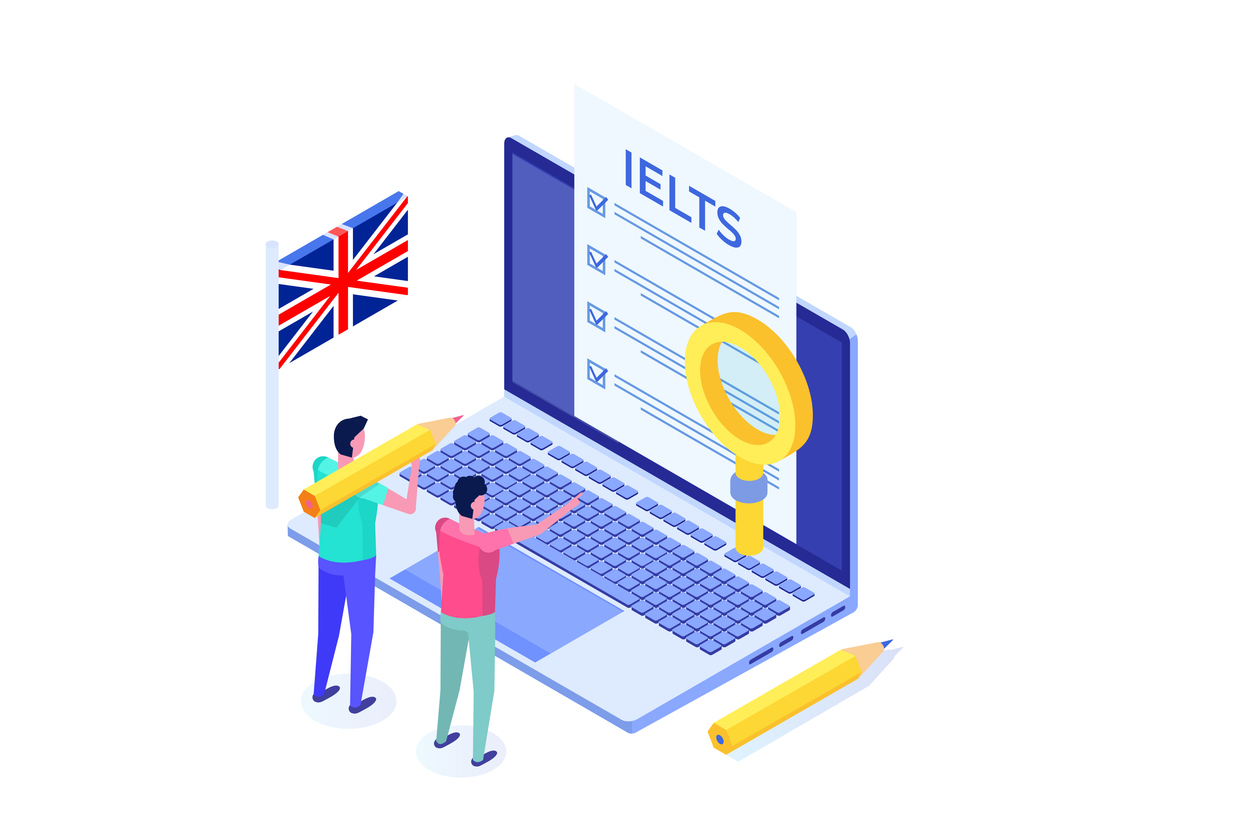
International English Language Testing System or IELTS is a standardized exam designed to measure the proficiency of non-native speakers in using the English language. The exam assesses the four skills of a language: Reading, Writing, Speaking and Listening.
What is an IELTS band score and how is it calculated?
Understanding the components of the IELTS test
The IELTS exam consists of four sections, namely Reading, Writing, Speaking and Listening. Each section of the exam is graded on a scale of 0 to 9, with 0 being the lowest and 9 being the highest. These scores are then averaged to determine your overall band score, which ranges from 0 to 9.
The role of assessment criteria in determining band scores
The assessment criteria are the key components that determine your band score in each section of the IELTS exam. The criteria for each section are different and are used by examiners to evaluate your proficiency in using the English language. For instance, the writing test is scored based on four criteria: Task Response, Coherence and Cohesion, Lexical Resource and Grammatical Range and Accuracy. On the other hand, the Speaking test is scored on four different criteria: Fluency and Coherence, Lexical Resource, Grammatical Range and Accuracy and Pronunciation. By understanding these criteria, you can prepare effectively for the exam and improve your band scores.
Band score calculator: How to predict your overall score
To calculate your overall band score, take the average of the band scores you obtained in all four sections of the IELTS exam. For instance, if your scores in the Reading, Writing, Speaking and Listening tests are 7.0, 7.5, 6.5 and 7.0, respectively, your overall band score would be (7.0 + 7.5 + 6.5 + 7.0) / 4 = 7.0. You could also use a band score calculator to predict your overall score.
What is the IELTS listening test and how is it scored?
IELTS listening test format and question types
The IELTS listening test is designed to assess your understanding of spoken English. The test consists of four sections, each containing 10 questions that are based on different listening tasks. You will need to listen to audio recordings, lectures and conversations and then answer the questions that follow. The test is approximately 30 minutes long and contains 40 questions in total.
Scoring raw scores and converting them to band scores
The listening test is marked out of 40, with one mark awarded for each correct answer. The raw score is then converted to a band score, which ranges from 0 to 9. The conversion is done using the IELTS listening band score chart.
Overview of the IELTS listening band score chart
The IELTS listening band score chart outlines the different band scores and the corresponding raw scores required to achieve them. For instance, if your raw score in the IELTS listening test is 34, your band score would be 8.0. At the same time, a raw score of 16 would give you a band score of 5.0.
How to prepare and improve your IELTS listening score
The importance of practice and familiarization with the test format
To improve your listening score, it is important to practice regularly and familiarize yourself with the test format. You can find sample tests and listening materials online to help you prepare for the test. Additionally, listening to English-language media like podcasts and radio shows can also help you improve your listening skills.
Tips and strategies for tackling different question types
It is vital to develop strategies for each listening task in the exam, this comes in handy in effectively tackling the different question types. Understanding the format of the exam questions beforehand can help you manage your time efficiently and increase your chances of getting more questions correct. For instance, in Section 1, which consists of dialogue between two people, familiarizing oneself with questions like ‘filling a schedule’, ‘booking a room’, ‘making arrangements’, and other common areas helps to quickly and correctly identify the correct answers.
Resources for IELTS listening test preparation
There are several resources available online to help you prepare for the IELTS listening test. IELTS Practice Tests from Cambridge are considered one of the best practice resources and provide candidates with complete practice tests at different levels of difficulty. In addition to online resources, there are several books and study materials available that can help you prepare for the exam.
IELTS band score requirements for academic and general training tests
Understanding the differences between academic and general training tests
The IELTS exam comes in two different formats: Academic and General Training. While the Listening and Speaking sections are the same in both formats, the Reading and Writing sections are different depending on the type of exam you choose.
The minimum band score required by universities and immigration authorities
The band score required for admission to different universities and institutions may vary according to their requirements. The minimum band score requirements for universities in popular study abroad destinations range from 6.0 to 7.5. Immigration authorities in countries like Australia and Canada also require a good IELTS band score to qualify for permanent residency or citizenship.
Overall IELTS band score: How individual scores from different sections are averaged
The individual scores from the different sections of the exam are averaged to arrive at the overall IELTS band score. Therefore, scoring high in each of the sections helps candidates improve their overall band score and the possibilities of enrolling into desired university or immigration process.
Assessment criteria for the IELTS listening test
The four criteria used to assess listening skills: Fluency and coherence, lexical resource, grammatical range and accuracy, and pronunciation
The IELTS listening test evaluates candidates on four different skills: fluency and coherence, lexical resource, grammatical range and accuracy, and pronunciation. Fluency and coherence refer to the ability to understand the flow of the conversation while being able to comprehend the connectedness of the information provided. The lexical resource section examines your vocabulary skills, whereas the grammatical range and accuracy section test the candidate’s knowledge of English grammar in expressing themselves. The pronunciation factor evaluates the ability to pronounce English words and phrases effectively.
How to improve each of the assessment criteria
The best way to improve each of the assessment criteria is to practice actively, in tune with one’s problem areas. For instance, a good starting point for improving pronunciation could be practicing isolated words and then progressing to phrases and sentences.
Examples of answers at different band score levels
The following example gives an overview of the types of responses expected at different band score levels:
- Band score 7.0: The candidate can understand and respond accurately to a range of listening activities and demonstrates an effective command of the language.
- Band score 6.0: The candidate can comprehend the main ideas of a conversation and provide general information. However, there may be occasional misunderstandings in a discussion.
- Band score 5.0: The candidate can understand the general meaning of a conversation but struggles to follow detailed discussions and may miss important information.
Conclusion:
Understanding the IELTS band score system for the Listening test is crucial for test-takers aiming to achieve their desired scores. By familiarizing themselves with the assessment criteria, band descriptors, and focusing on improving listening skills through consistent practice, candidates can enhance their performance and increase their chances of obtaining a higher band score. With dedication and preparation, test-takers can confidently approach the IELTS Listening test and demonstrate their English language proficiency effectively.









